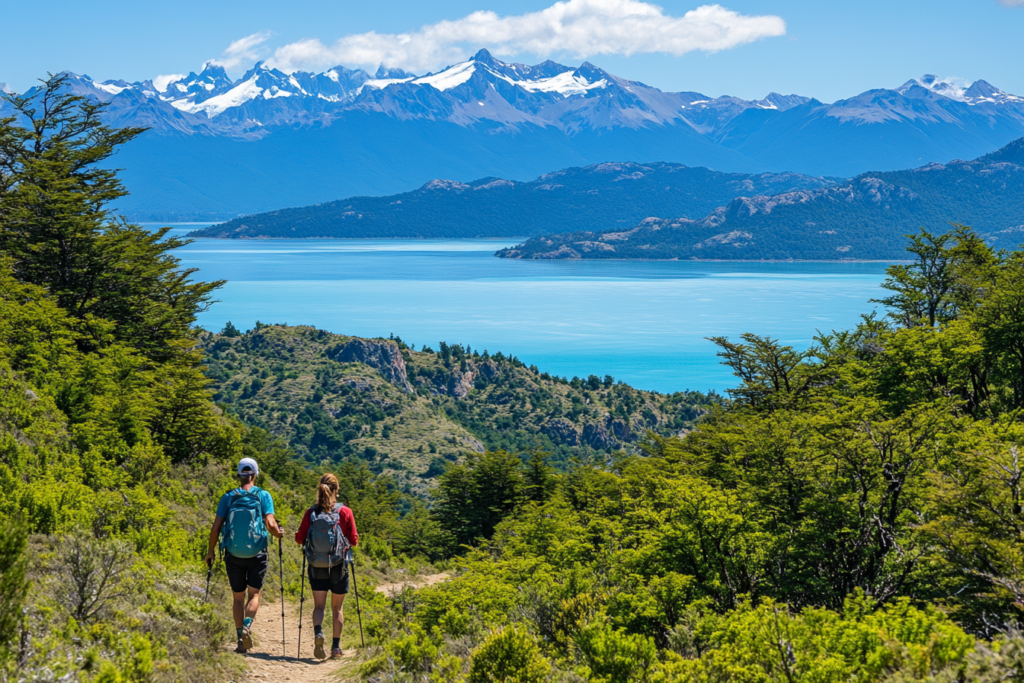
Have you ever wondered why your feet feel great in some socks but sweaty and uncomfortable in others?
Outdoor brands have mastered the art of keeping your feet happy. They use advanced materials like Profilen™ fibers, which reduce blisters, and stretchable piqué structures for a snug fit. Features like ventilation channels and moisture-wicking fabrics ensure your feet stay cool and dry, even on the longest hikes.
Plus, added cushioning in key areas makes every step more comfortable. These thoughtful touches mean you can focus on the trail, not your feet.
Key Takeaways
- Pick socks made of merino wool for great moisture control. They keep feet dry and comfy in all weather.
- Choose socks with synthetic blends for strength and fast drying. These are great for tough or active sports.
- Try bamboo socks if you want an eco-friendly choice. They let air in and stop bad smells, keeping feet fresh.
- Get socks with mesh panels to improve airflow. This helps stop sweat and keeps feet cool during long activities.
- Look for seamless socks to avoid rubbing and irritation. They stop blisters and make outdoor adventures more comfortable.
What Materials Make Socks Truly Breathable?
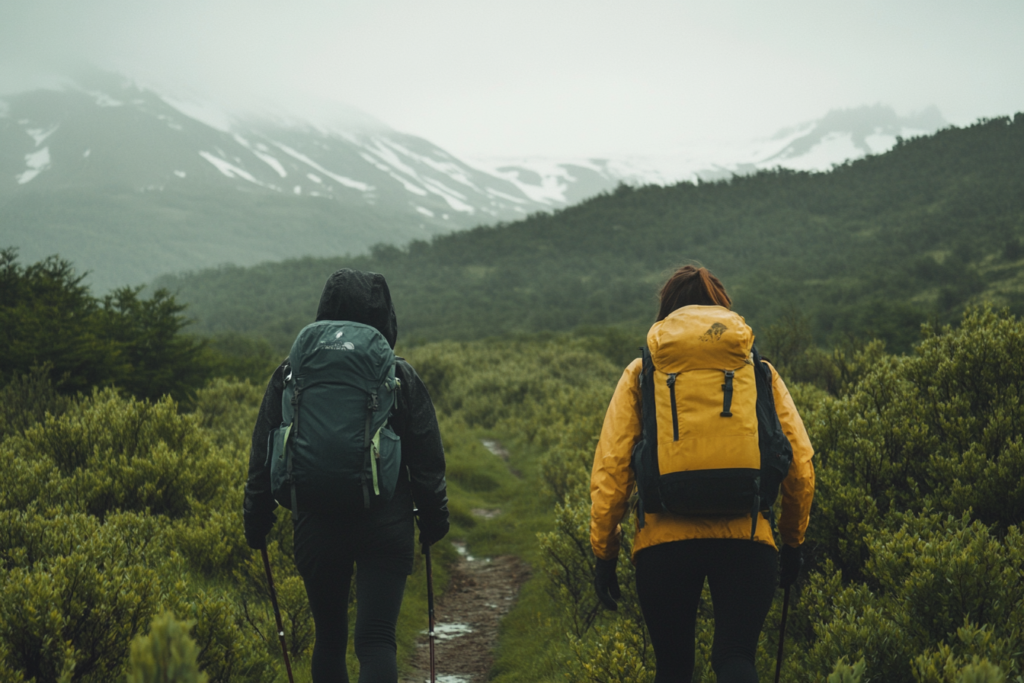
Merino Wool for Moisture-Wicking and Temperature Regulation
Merino wool is a game-changer when it comes to breathable socks. This natural fiber excels at keeping your feet dry and comfortable, no matter the weather. It works by wicking moisture away from your skin and allowing it to evaporate, which prevents sweat from building up. Plus, merino wool has incredible temperature-regulating properties. It keeps your feet warm in cold conditions and cool in hot weather.
Here’s why merino wool stands out:
- Insulation in Cold Conditions: The fibers create tiny air pockets that trap heat while still letting moisture escape.
- Vapor-Phase Breathability: It moves moisture vapor away from your skin, so you don’t feel clammy.
- Odor Control: Merino wool naturally resists bacteria, which means less odor after a long day outdoors.
Take a look at how merino wool compares to other materials:
| Performance Metric | Description |
|---|---|
| Insulation in Cold Conditions | Merino wool fibers create air pockets that trap heat while allowing moisture vapor to escape. |
| Vapor-Phase Breathability | Merino wool transports moisture vapor away from the body, preventing the accumulation of liquid sweat. |
| Odor Control | The moisture management properties reduce bacterial growth, leading to less odor buildup. |
| Performance Across Different Climates | Merino wool maintains warmth in cold weather and promotes cooling in warm conditions through moisture absorption and release. |
If you’re planning a hike or camping trip, socks made with merino wool are a reliable choice for all-day comfort.
Synthetic Blends for Durability and Ventilation
Synthetic blends combine the best of both worlds: durability and breathability. These materials, like polyester and nylon, are designed to handle tough conditions while keeping your feet cool and dry. Synthetic fibers are excellent at wicking moisture and drying quickly, making them perfect for high-intensity activities.
Here’s what makes synthetic blends so effective:
- They enhance breathability and moisture absorption, ideal for work or athletic socks.
- Quick-drying performance keeps your feet dry during intense activities.
- Blended materials, like wool with nylon or spandex, add comfort and wear resistance.
- Ventilation holes improve air circulation, preventing overheating.
For example, Coolmax Micro Crew socks have shown exceptional durability. Even after multiple hikes and exposure to rough terrain, they remain in great shape. Synthetic blends are a smart option if you need socks that can handle demanding use without sacrificing comfort.
Bamboo Fabric as an Eco-Friendly Breathable Option
Bamboo fabric is a fantastic choice if you’re looking for breathable socks that are also eco-friendly. This material allows air to circulate freely, which helps regulate body temperature and prevents overheating. Bamboo’s moisture-wicking abilities are another big plus. It absorbs and evaporates sweat quickly, keeping your feet dry and comfortable.
What’s more, bamboo fabric has natural antibacterial properties. This means it helps control odor, making it a great option for anyone who values hygiene. It’s especially useful in hot and humid conditions, where staying cool and fresh can be a challenge.
Here’s a quick comparison of sock materials and their breathability:
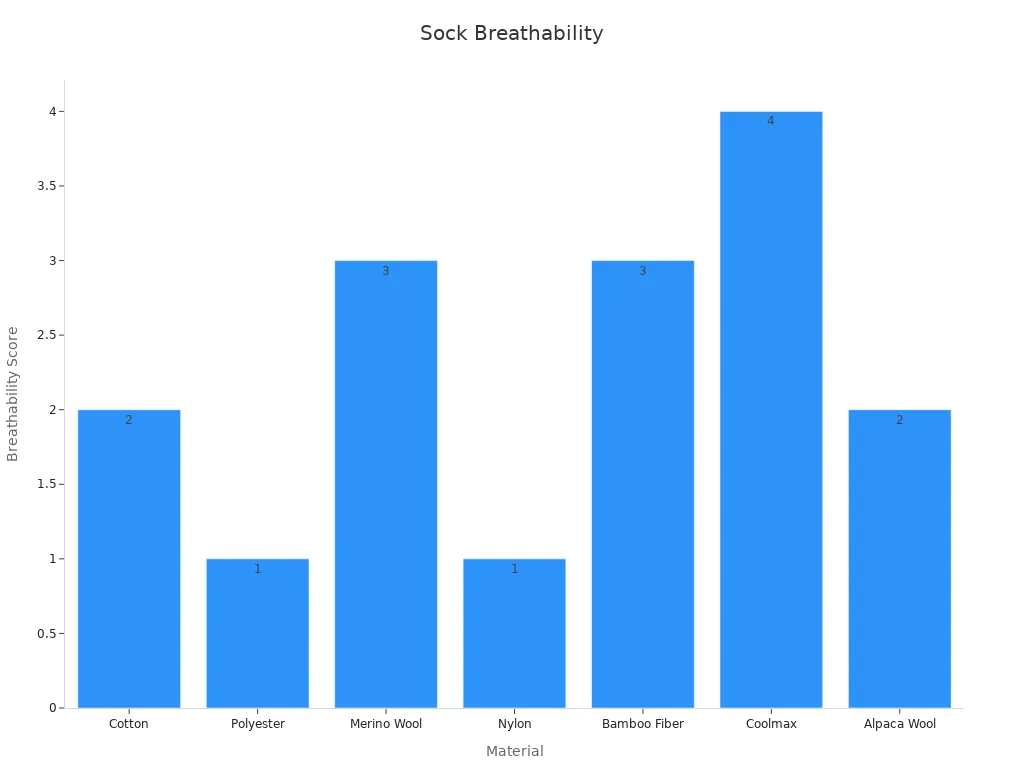
If you care about sustainability and comfort, bamboo socks are a win-win. They’re gentle on the planet and keep your feet happy during any activity.
Which Design Features Enhance Sock Ventilation the Most?
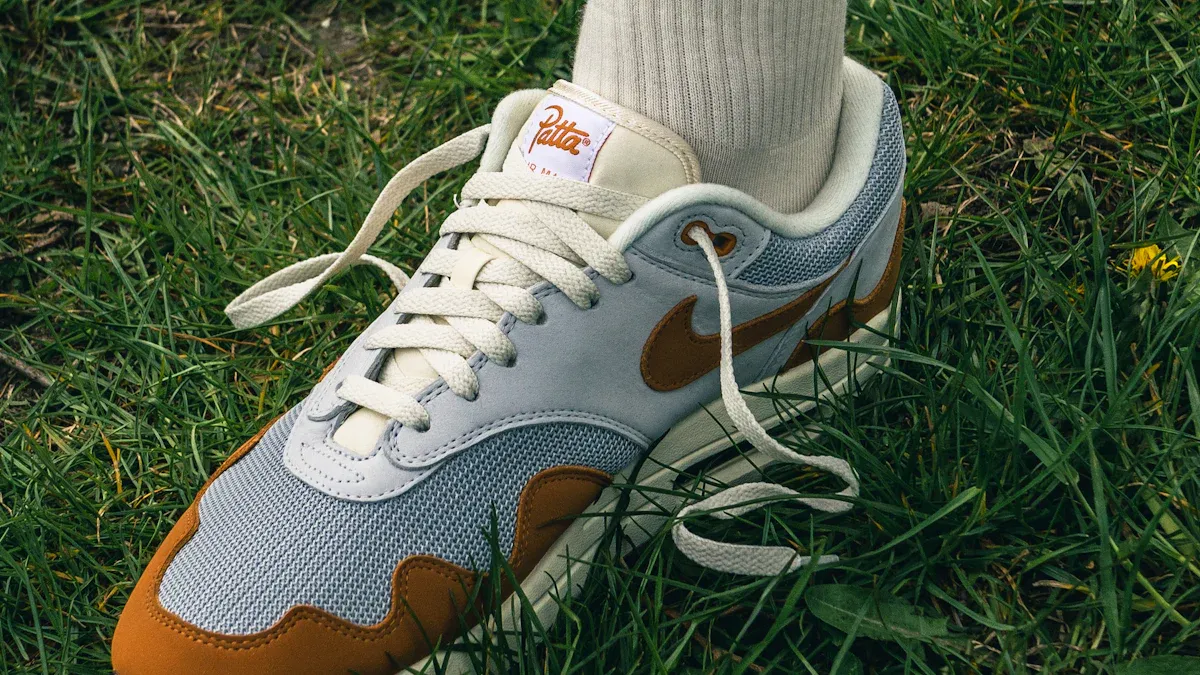
Mesh Panels for Improved Airflow
Have you ever noticed how some socks feel cooler and fresher, even after hours of wear? That’s often thanks to mesh panels. These panels are like tiny windows that let air flow freely around your feet. By improving ventilation, they help keep your feet dry and comfortable.
Here’s why mesh panels are a game-changer:
- They boost airflow, reducing the chance of moisture buildup.
- Less moisture means fewer opportunities for fungal growth.
- Studies show that mesh panels can increase air permeability by up to 50%.
This design isn’t just about comfort. It’s about keeping your feet healthy and fresh, no matter how long your adventure lasts. Whether you’re hiking, running, or just spending a day outdoors, socks with mesh panels make a noticeable difference.
Strategic Cushioning for Comfort and Breathability
Cushioning in socks isn’t just about softness. It’s also about smart placement. Outdoor brands strategically add padding to high-impact areas, like the heel and ball of the foot. This reduces pressure and prevents discomfort during long activities.
But here’s the cool part: this cushioning doesn’t block airflow. Instead, it works with breathable materials to keep your feet cool. Think of it as a balance between support and ventilation. You get the comfort you need without overheating.
Some socks even use thinner padding in less stressed areas, allowing for better air circulation. This thoughtful design ensures your feet stay comfortable and dry, even during intense activities.
Seamless Construction to Minimize Irritation
Seams might seem like a small detail, but they can make a big difference. Traditional seams can rub against your skin, causing irritation or even blisters. Seamless construction solves this problem by eliminating those rough edges.
Here’s how seamless designs improve your experience:
- They remove friction points that can lead to chafing.
- A snug fit keeps the sock in place, reducing movement and irritation.
- Customizable seamless designs ensure a smooth, comfortable feel.
Research confirms that seamless socks not only reduce irritation but also enhance overall comfort. When your socks fit perfectly and feel smooth, you can focus on your activity instead of your feet.
If you’ve ever struggled with blisters or discomfort, seamless socks are worth trying. They’re a small change that makes a big impact on your outdoor adventures.
How Outdoor Brands Test Socks for Breathability
Real-World Testing in Varied Conditions
Outdoor brands don’t just design socks and hope for the best. They put them through rigorous real-world testing to ensure they perform in every condition you might face. From tropical climates to snowy mountains, these tests cover it all. For example, testers have taken socks to the warm and wet north shore of Maui to see how they handle humidity. Ski sock testers, on the other hand, spend at least five days a week on the slopes, pushing the socks to their limits in cold, snowy conditions.
Here’s a quick look at some of the methods brands use to test breathability:
| Methodology Description |
|---|
| Using a diffuser to test the breathability of each sock. |
| Testing socks in various climates, like the humid tropics or snowy mountains. |
| Ski testers wearing socks daily on the slopes to assess performance. |
These tests ensure that no matter where you go, your socks will keep your feet comfortable and dry.
Feedback from Athletes and Outdoor Enthusiasts
Who better to test socks than the people who rely on them the most? Outdoor brands work closely with athletes and outdoor enthusiasts to gather feedback. Professional runners, for instance, have tested socks during ultra-marathons and trail runs. They’ve reported that the socks stay comfortable and durable, even in wet conditions. Amateur runners have also shared their experiences, noting how the socks keep their feet dry and improve their overall running experience.
This feedback is invaluable. It helps brands understand how their socks perform in real-world scenarios and what improvements might be needed.
Continuous Refinement Based on User Insights
Testing doesn’t stop once the socks hit the shelves. Outdoor brands continuously refine their designs based on user insights. They listen to what you and other customers have to say. Whether it’s a suggestion for better ventilation or a request for more cushioning, brands take this feedback seriously. They tweak their designs, test again, and release updated versions that are even better than before.
This ongoing process ensures that you always get the best possible product. It’s why outdoor socks continue to evolve and meet the demands of every adventure.
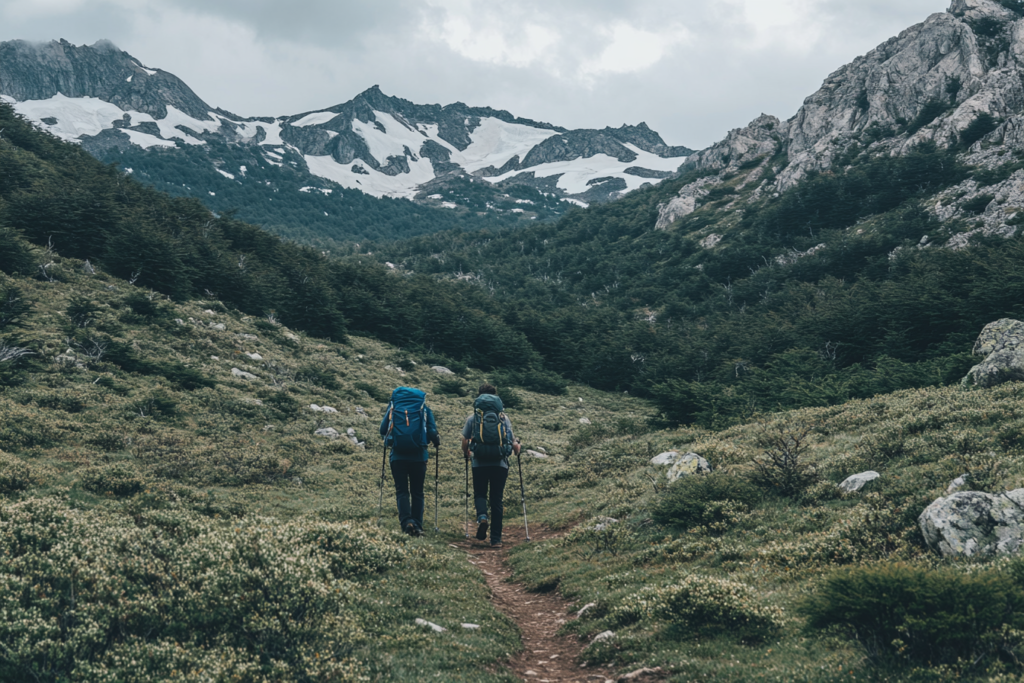
What Are the Benefits of Breathable Socks for Outdoor Activities?
Enhanced Comfort for Long Adventures
When you're out on a long hike or a day of exploring, comfort is everything. Breathable socks make a huge difference by keeping your feet dry and cozy. They wick away moisture, prevent overheating, and provide just the right amount of cushioning. This combination ensures your feet feel great, even after hours of activity.
To understand why breathable socks excel in comfort, take a look at this breakdown of performance metrics:
| Metric | Weighting (%) |
|---|---|
| Comfort | 25 |
| Wicking and Breathability | 25 |
| Warmth | 20 |
| Durability | 20 |
| Drying Speed | 10 |
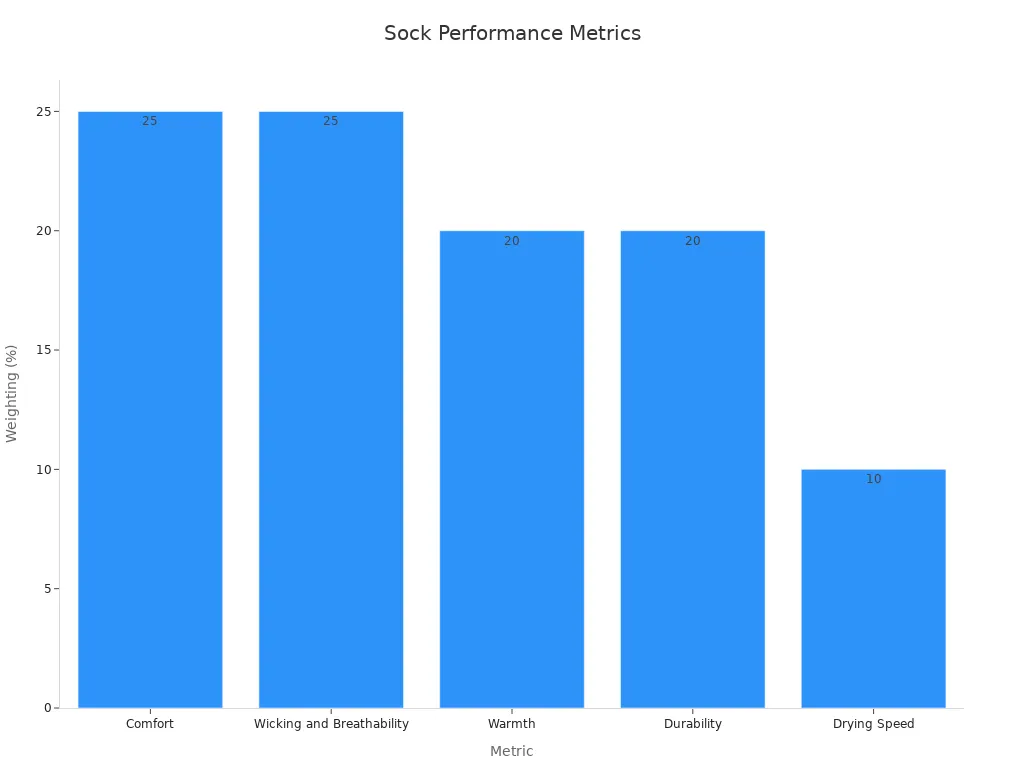
These features work together to keep your feet happy during long adventures. Whether you're trekking through forests or climbing mountains, breathable socks ensure every step feels light and comfortable.
Prevention of Blisters and Hot Spots
Blisters can ruin any outdoor adventure. Luckily, breathable socks are designed to minimize friction and manage moisture, two major culprits behind blisters. By keeping your feet dry and reducing rubbing, these socks help you avoid painful hot spots.
Here’s what research says about blister prevention:
- Certain sock materials, like merino wool and synthetic blends, reduce the frequency of blisters in hikers.
- Moisture-wicking fibers improve comfort and prevent sweat buildup, which is key to avoiding blisters.
- Material properties and moisture control play a critical role in reducing friction blisters.
By choosing breathable socks, you’re giving your feet the best chance to stay blister-free, even on the toughest trails.
Improved Performance and Endurance
Breathable socks don’t just keep your feet comfortable—they also help you perform better. Innovative designs, like those from Swiftwick and X-BIONIC, combine features like firm compression and moisture-wicking materials. These elements work together to reduce fatigue and improve endurance.
| Sock Model | Key Features |
|---|---|
| Swiftwick Aspire Twelve Socks | Firm compression provides contoured support, stabilizes muscles, reduces fatigue, improves performance. |
| Swiftwick Aspire Zero Tab Socks | Engineered with firm compression, moisture-wicking, and breathability to reduce fatigue during endurance activities. |
| X-BIONIC Socks | High-tech design with ventilation, optimal fit, and protection against friction to enhance endurance. |
These socks are built for action. They stabilize your muscles, keep your feet cool, and prevent discomfort, allowing you to push further and achieve more during your outdoor adventures.
Outdoor brands have mastered the art of creating breathable socks by combining innovative materials, smart design features, and rigorous testing. These efforts result in socks that keep your feet dry, comfortable, and blister-free during any adventure.
Here’s a quick breakdown of how these features contribute to breathability:
| Feature | Contribution to Breathability |
|---|---|
| Moisture-wicking fabrics | Helps in keeping feet dry by drawing moisture away |
| Targeted cushioning | Reduces friction, enhancing comfort during use |
| Seamless toe designs | Prevents blisters, improving overall comfort |
| Breathable mesh | Enhances airflow, promoting better ventilation |
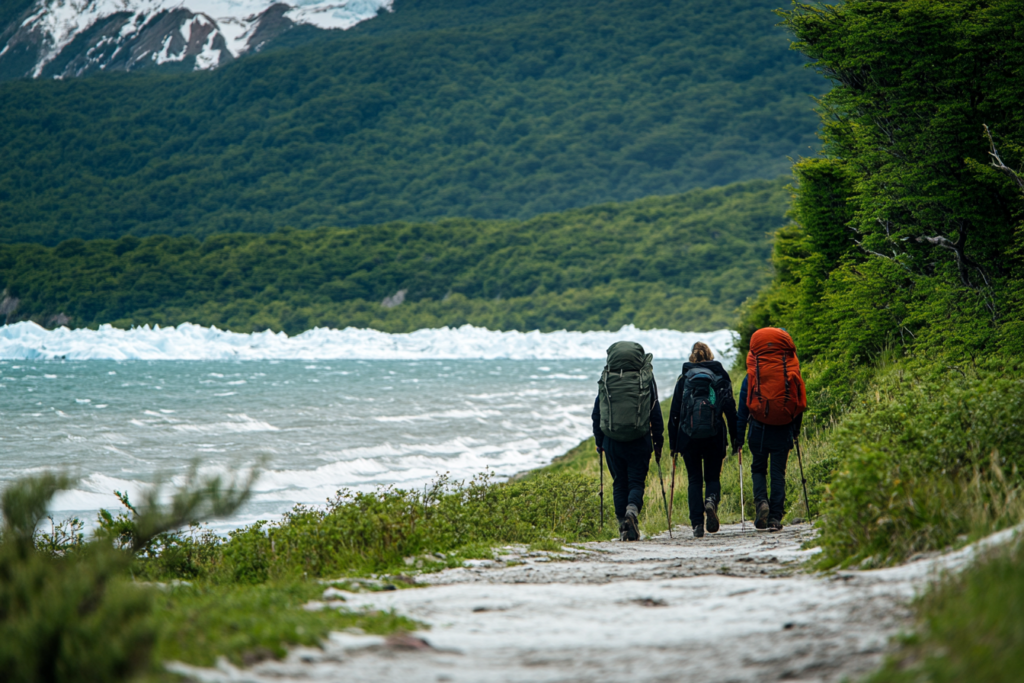
Conclusion
The growing demand for performance-oriented socks highlights their importance. With advancements in fabric technology, brands like Nike and Adidas are creating moisture-wicking and cushioned options that elevate your outdoor experiences. Investing in breathable socks isn’t just about comfort—it’s about making every step of your journey better.
FAQ
What makes breathable socks different from regular socks?
Breathable socks use advanced materials like merino wool or mesh panels to wick moisture and improve airflow. Regular socks often trap heat and sweat, making your feet uncomfortable. Breathable socks keep your feet dry, cool, and blister-free, even during intense activities. 🧦✨
What activities benefit the most from breathable socks?
Breathable socks shine during hiking, running, cycling, and other outdoor adventures. They’re also great for gym workouts or long workdays. Anytime your feet sweat or face friction, breathable socks help you stay comfortable and focused. 🏃♂️🚴♀️
What should I look for when buying breathable socks?
Focus on materials like merino wool, synthetic blends, or bamboo. Check for features like mesh panels, seamless construction, and strategic cushioning. These details ensure maximum comfort and ventilation. Pro tip: Look for socks tested in real-world conditions for reliability. ✅
Why do breathable socks help prevent blisters?
Blisters form from moisture and friction. Breathable socks wick away sweat and reduce rubbing with seamless designs and targeted cushioning. This keeps your feet dry and irritation-free, even on long hikes or runs. No more painful hot spots! 🚫🔥
What’s the best way to care for breathable socks?
Wash them in cold water with mild detergent. Avoid fabric softeners, as they can clog moisture-wicking fibers. Air-dry them to maintain their shape and performance. Proper care ensures your socks last longer and stay breathable. 🧺🌬️
Related
1.Do Breathable Socks Help Prevent Foot Fungus? →
2.How to Choose the Best Sock Materials: Expert Advice for Different Industries →
3.Solve Sweaty Feet Issues with the Best Work Socks for Brands →
4.The science of wool, merino wool fibers and thermo regulation and breath ability heat cold sweat? →
5.Custom Running Socks: Best to Prevent Blister →
